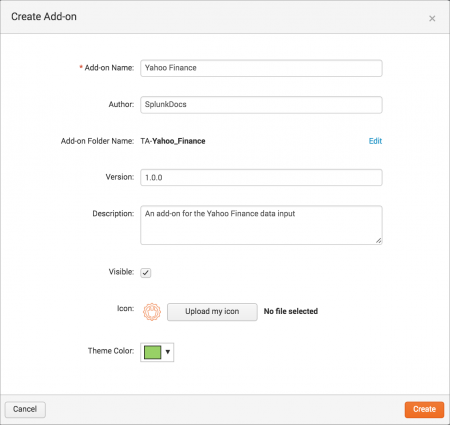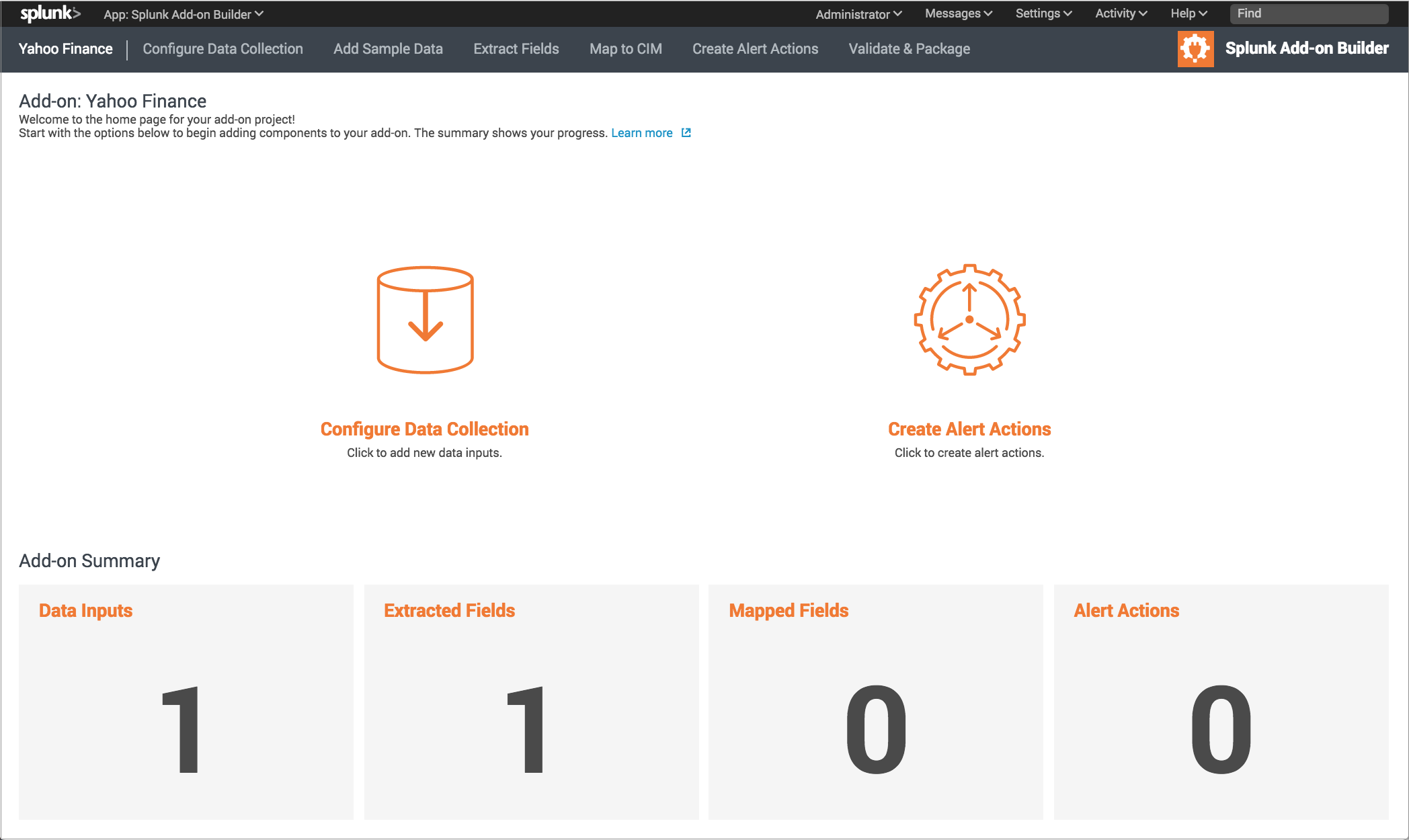Create an add-on
Click Create an add-on on the Add-on Builder home page, then specify the basic properties for your add-on. These settings also determine how your add-on appears in Splunk Web.
Set the following properties for your project:
| Add-on Name | The name of the add-on. |
| Author | The author name, which appears with the add-on in Splunk Web. |
| Add-on Folder Name | The folder name for the add-on under $SPLUNK_HOME/etc/apps/.
Add-on folder names have a prefix of "TA-", which is a requirement for Splunk Enterprise Security add-ons. For add-ons created by Splunk, the folder name prefix is "Splunk_TA_". To change the folder name suffix, click Edit. |
| Version | The version number of the add-on, which appears with the add-on in Splunk Web. |
| Description | The description of your add-on. |
| Visible | Indicates whether you want the add-on to be visible in the Splunk Web app list. By default, add-ons are not visible. |
| Icon | Upload an image file to use as the icon for your add-on. The Add-on Builder creates a large version (72x72 pixels) and a small version (36x36 pixels) of the icon from this image. |
| Theme Color | The color to use for your add-on. |
Click Create to save your settings. The Splunk Add-on Builder displays a home page for your new add-on with the workflow for building it, including a summary of the objects you have configured. You can revisit and modify your work as needed.
The workflow includes the following activities, which you can access by clicking icons or by using the Add-on Builder navigation bar:
| Configure Data Collection | Get data into your add-on by configuring data inputs. You can also configure setup options for your add-on. |
| Add Sample Data | Add sample data for your data inputs so that you can create knowledge object from your data. |
| Extract Fields | Create field extractions from the data inputs you configured. |
| Map to CIM | Map the fields from the field extractions to the common information model (CIM). |
| Create Alert Actions | Create custom alert actions, including running an adaptive response action for Splunk Enterprise Security. |
| Validate & Package | Validate the add-on for best practices, and test the modular/scripted inputs, field extractions, and CIM mappings. The Splunk Add-on Builder shows you any errors or warnings, along with recommendations about how to address them.
Package the add-on when you are ready to install your add-on and use it. The result is a compressed file that contains a directory with the necessary configuration files. |
If a certain activity requires you to restart Splunk Enterprise, a circular arrow is displayed next to it. For example, after adding a data input, you must restart Splunk Enterprise before you can extract fields.
| Use the Splunk Add-on Builder | Configure data collection |
This documentation applies to the following versions of Splunk® Add-on Builder: 2.0.0


 Download manual
Download manual
Feedback submitted, thanks!